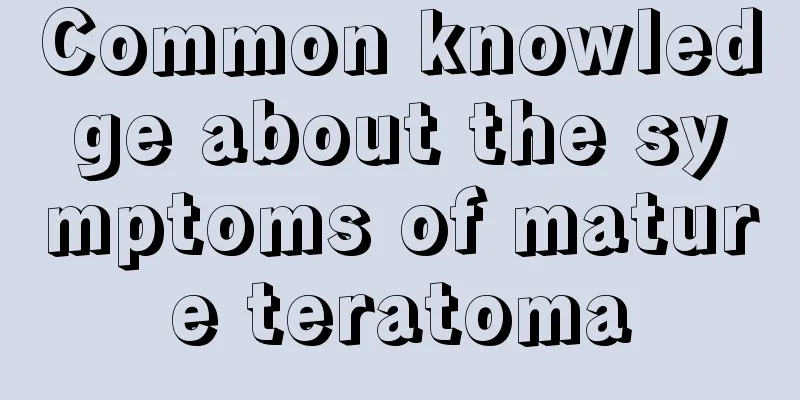Classification of cardiorenal syndrome

|
Everyone knows that the heart and kidneys are two very important organs in our body. If there is a problem with our heart, we may not have a heartbeat and thus be unable to breathe. But when there is a problem with our kidneys, we will gradually move towards renal failure, and at this time our life will come to an end. So what types of cardiorenal syndrome are there? There are generally five types of cardiorenal syndrome. The first is kidney changes caused by acute heart damage, the second is changes in kidney function caused by chronic heart damage, the third is heart damage caused by acute kidney disease, the fourth is heart damage caused by chronic kidney disease, and the fifth is heart and kidney damage caused by other diseases in the body. First, we need to inquire about the patient's medical history to understand how long the patient has been ill and whether problems occurred with the heart or the kidneys first. If the patient has long-term hypertension or coronary heart disease, or diabetes causes heart changes, and then kidney damage gradually appears, that is, heart damage first and then kidney damage. If the patient originally had no heart problems, but suffered from long-term chronic nephritis for more than ten or twenty years, and gradually developed heart damage, then the heart damage was caused by the kidney damage. The type of cardiorenal syndrome can be determined by taking medical history and conducting relevant examinations. 1. Nephrotic syndrome in children is a clinical syndrome caused by various reasons that increase the permeability of the glomerular basement membrane, leading to the loss of blood protein in the urine and causing a series of pathophysiological changes. Clinical features: (1) Heavy proteinuria; urinary protein excretion greater than 50 mg/ (kg.d); (2) Hypoproteinemia; plasma albumin less than 30 g/L; (3) Hyperlipidemia; (4) Obvious edema. The diagnosis is based on the presence of massive proteinuria and hypoproteinemia. 2. Classification (1) Clinical classification: Chinese pediatricians divide primary nephrotic syndrome into two types: simple nephrotic syndrome and nephritic nephropathy. Clinically, the diagnosis is based on hematuria, hypertension, azotemia, and hypocomplementemia: ① Urine examination shows more than 10 red blood cells per high-power field of view (referring to urine sediment examination three times in two weeks); ② Recurrent hypertension; ③ Persistent azotemia, excluding hypovolemia; ④ Repeated decrease in total blood complement or C3. Anyone who has symptoms of nephrotic syndrome and one or more of the above four items is diagnosed as nephritic nephropathy, while those who do not meet the above conditions are diagnosed as simple nephropathy. (2) Pathological classification: The main pathological changes of primary nephrotic syndrome are in the glomeruli. There are roughly five pathological types: ① minimal change type; ② focal segmental glomerulosclerosis; ③ membranous proliferative glomerulonephritis; ④ simple mesangial proliferation; ⑤ proliferative glomerulonephritis; ⑥ focal glomerular sclerosis; ⑦ membranous nephropathy. (3) Classification based on the efficacy of glucocorticoids: ① Hormone-sensitive nephropathy: urine protein turns negative within 8 weeks of regular prednisone treatment; ② Hormone-resistant nephropathy: urine protein is still positive after 8 weeks of regular prednisone treatment; ③ Hormone-dependent nephropathy: sensitive to hormones, but relapses within 1 month after dose reduction or discontinuation, and repeats more than 2 times; ④ Relapse and frequent relapse of nephropathy: relapse (including recurrence) refers to urine protein turning from negative to positive for more than 2 weeks. Frequent relapse refers to relapse or recurrence ≥2 times during the course of kidney disease, or ≥3 times within 1 year. |
<<: How long does it take to treat kidney stones
>>: How to make hair turn white naturally
Recommend
The right mental and spiritual state is a powerful weapon against colorectal cancer
Colorectal cancer is a common type of intestinal ...
White tea grade classification_How to classify white tea grades
People in modern society often use electronic pro...
Can glioma be passed down to children?
Children are the hope of a family. For patients w...
Does nasopharyngeal cancer require surgery? How to check?
Nasopharyngeal carcinoma is a disturbing disease....
What tests are done to diagnose early lung cancer
Early stage lung cancer is a hidden disease, and ...
Is low pressure 53 normal?
Many people have low blood pressure. When our blo...
How to prevent liver cancer? There are three dietary principles for liver cancer patients
Try to do better within your control. Every time ...
What is ventricular septal defect and pulmonary hypertension?
Ventricular septal defect can cause pulmonary hyp...
How to treat bad breath
With the faster and faster development of moderni...
Can red wine cure stomach problems?
Speaking of red wine, the first word that comes t...
Causes of laryngeal cancer
Laryngeal cancer is a malignant tumor that occurs...
What are the symptoms of peripheral arteriosclerosis?
Peripheral arterial sclerosis often occurs in the...
Delicious medicinal food drives away throat cancer
Laryngeal cancer causes physical and mental pain ...
What will happen if liver cancer is not treated in time? Liver cancer will bring these harms to the body
As we all know, early liver cancer is not easy to...
What's wrong with the hollow toenail?
The hollow toenails are often caused by onychomyc...









